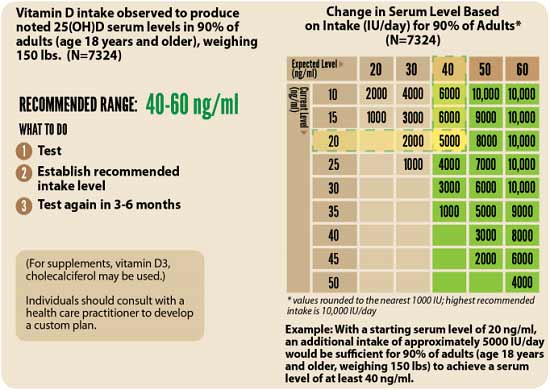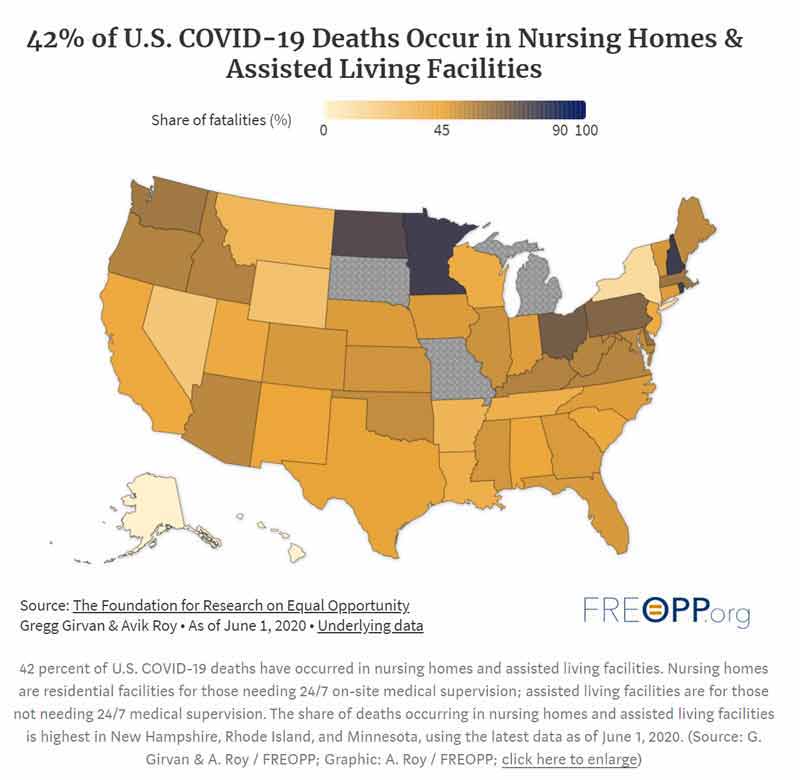Everything You Wanted to Know About Your Immune System
The workings of the human immune system are fascinating and especially important during the coronavirus outbreak. While the immune system's armamentarium of stem cells, helper T cells, cytotoxic T cells and other fighters is impressive, so is the armamentarium that a virus uses to invade cells and make them factories to replicate it.
A vivid and entertaining video, "The Amazing Immunology of our Viral Issue — and Herd Immunity Revelations!" describes the ongoing war between your immune system and an invading virus, such as COVID-19. It was recently created by Ivor Cummins, a chemical engineer who runs the health website "The Fat Emperor."1 Creon Levit, chief scientist of Planet Labs, was the guest.
Levit, who has collaborated with top immunologists, is a professional applied physicist who previously served as an aerospace engineer at NASA for over 35 years.2 Planet Labs is a private satellite data company that operates over 300 imaging satellites in the Earth's low orbit.3
In "The Amazing Immunology of our Viral Issue — and Herd Immunity Revelations!" Levit showcases in bright charts and visuals the many intricacies and cell signalings that enable the immune system to fight viruses like COVID-19 as well as how viruses like COVID-19 can fight back.
An especially burning question that Levit and Cummins address is if and how herd immunity can be achieved against COVID-19. They reach some surprising findings.
Antibody Testing Is Not Predictive for COVID-19
It is commonly believed that the only people who may have become immune to COVID-19 are those who show antibodies when they are tested, says Cummins, and a country's "herd immunity" is often based on the results of such tests. For example, if 7% or 8% of a population have antibodies, it is assumed that a country has only that low percent of herd immunity. This is a misconception, say both men in the video.
The science suggests that people may have a significant amount of de facto or effective immunity without showing antibodies, they say. For example, some people, referred to as "denatured" or "barriered" cases, may have been exposed to the virus but, unlike those around them, did not become ill. According to Lev:4
"… because of these people's either luck or their healthy metabolisms, the virus gets blocked through mucous membranes and other sorts of things and it never actually infects their cells … therefore they're not even mounting an immune response and they could get challenged again and perhaps infected.
But, some number of people who get exposed don't get the disease, not so much because of a classic immune response because it's just blocked through their body membranes and sort of nonspecific processes."
According to Cummins, if such people "get past" the virus "they're not going to be a spreader … unless they get a huge viral load that's much bigger" should the virus come along again. These people may not be contributors to herd immunity per se but they are "less susceptible" to getting the disease, clarifies Levit.5
Other People May Also Have De Facto Immunity
Other people may contribute to a region's herd immunity too, yet are often not detected through current antibody tests that are administered. Among these people are those considered to have an “innate" or "cleared" status, which means, according to Levit:6
"… that certain aspects of your immune system, certain antibodies and certain other signaling processes can prevent or clear a viral infection even though you've never been exposed to that particular virus before — even though you have no immunological memory."
Such generalized immune responses that can recognize and fight viruses that have never been encountered before are seen throughout the animal world, especially in primitive animals and even in microbial life, says Levit.7
"The only immune system they have is a generic system that … targets generally all bacteria or generally all viruses and so this is not a thing where you'd have specific antibodies to a specific virus, but you have signaling where virally infected cells do certain things. And then the immune system … starts setting nearby cells into sort of antiviral modes …
… some people manage to fight off the infections presumably using their innate immune system without necessarily getting sick, and generating adaptive or acquired immune response … they really did have an immune battle. They will go on to be de facto herd immunity contributors to society but they won't show antibodies."
The Role of T Cells in Immunity
According to the video, mammalian immune systems have evolved to target specific viruses or families of viruses and are all based on T cells — lymphocytes produced or processed by the thymus gland.
If someone is infected with a virus, their body can mount a T cell response targeting that particular virus and the infected cells, especially when they have immunological memory. Immunological memory is a well-known concept, says Levit:
"We've all heard about this, like once you get immune to something you might stay immune for years or for your whole life. You can have immunological memory that you get from viruses that are not identical to the current virus but are similar."
Prior infection with SARS or other coronaviruses like the common cold may provide such prior immunity and immunological memory, says Levit.8 Your T cell system may act to clear your body of the infection caused by similar but not identical viruses. Notably, he says, this can happen "without generating a host of antibodies."
Moreover, says Levit, COVID-19 antibody tests "only test for a small fraction of the possible antibodies against COVID."
How T Cells Work
One of the most amazing immune system components depicted in "The Amazing Immunology of our Viral Issue" are T cells. Their intuition and adaptability in fighting invading viruses is just short of miraculous. According to Levit there are:9
"… many hundreds of thousands or millions of different types of T cells and the difference between one T cell and another is that each one is targeted to recognize a specific peptide fragment held in an MHC [major histocompatibility complex] molecule.
The only ones that are in your life when you’re no longer well, the only ones that are in your circulation during normal life are ones that target non-self proteins.
All the T cells that target self proteins get eliminated in your thymus when you're very young so you only have T cells circulating in your body that target MHC that's holding non-self peptides. [This kind of T cell] is a specific variant of a T cell that only recognizes this one particular non-self peptide … it recognizes stuff you've never seen before like SARS-CoV-2."
Other Immune Responses May Not Produce Antibodies
B cells, lymphocytes not processed by the thymus gland, T cells and MHC (major histocompatibility complex) genes that encode major antigens can also mount immunological responses, says Levit.10
"This is basically that if you have never seen the virus before and you mount an immune response that starts with T cells and MHC … you can clear the infection from your body using a variety of different mechanisms … It is not necessarily the case that it is going to activate a system that produces the antibodies that the antibody test tests for …
Your infection may get cleared in principle by one of the T cell mediated pathways like cytotoxic T cells that aren't tested for by the antibody test."
People who have successfully fought COVID-19 this way "are contributing to herd immunity in the society but without triggering the test," Cummins summarizes. Those who are tested for COVID-19 antibodies but receive a "false negative" result when they actually harbor the coronavirus' antibodies also contribute to herd immunity. It is not clear how often this happens, the men agree.
Viruses Can Trick the Immune System
A virus' "agenda" is to replicate itself in a host's cells. Unlike bacteria, a virus cannot reproduce on its own. But, says Levit, if a thousand viruses get into your body from someone's sneeze and they don't get into your cells to reproduce, they do no harm. "There's just a thousand floating around and they go nowhere."11
The many proteins that the virus needs to replicate and infect other cells "are buried inside the virus where antibodies will never see it," so they will not trigger a response "when the virus is freely floating around" in this manner, says Levit.
But, and it is a big but, viruses are cagey and use spike proteins to invade a host's cells, points out Levig.12
"The virus subverts your cell and then eventually the cell starts budding viruses out from its own membranes and then eventually the cell can become almost like a virus crystal. It can be so taken over with viruses that it just stops functioning … The viruses have even maybe infected the nucleus [of the cell] … so the cell's a goner."
Ideally, the body's immune system will not let the virus enter, says Levit.13
"One thing your body can do if it has the right antibodies to get rid of viruses is … that it can just completely surround the virus. It can cause it to stop working because there's no more exposed spike protein to use to sneak into a cell.
Also, once the virus is surrounded by antibodies, other parts of the immune system know that if they see something surrounded by antibodies, that thing should be digested and removed … the virus itself as a ball or sphere has got identifiable proteins. If you have memory and you've built antibodies … it can be attacked directly as an entity as a virus."
Your Immune System Is Amazing
At the conclusion of this excellent video, you can't help but be amazed at the intelligence of your immune system in mobilizing defenses against viruses like COVID-19 as well as other pathogens.
The subtle ways in which your immune system recognizes invading viruses also suggest that herd immunity against COVID-19 may be much higher than that estimated by public health officials. As Levit summarizes at the end of the video:14
"… it appears that there may very well be a set of people who have been infected with COVID but who aren't producing antibodies, perhaps because these other immunological mechanisms, T cells or [the] innate system or both cleared them effectively before they started producing a lot of antibodies.
Also, conversely, we have this other phenomenon that a bunch of people who've never been infected with COVID already appear to have some of the immunological machinery that is partially specialized to dealing with COVID because they've been infected with homologous viruses in the past."
One conclusion that can be drawn from the video is that antibody tests as a basis for projected herd immunity are clearly not effective. Those who may have been infected do not necessarily harbor antibodies, including asymptomatic people whose illnesses were not detectable.15
At the video's close, Cummins expresses awe at the many-faceted human immune system designed to keep you healthy and promote herd immunity.
"I would think that [it is] the most exotic immunological machinery in the universe … this whole system you described that's not the antibody system, but the whole T cell system [that] has been developed and I would guess it's pretty damn effective after a million years of evolution."
from Articles https://ift.tt/2V6RZwD
via IFTTT


